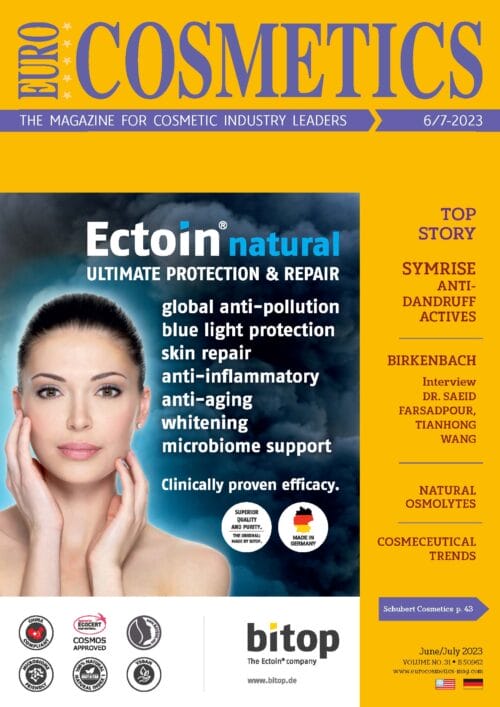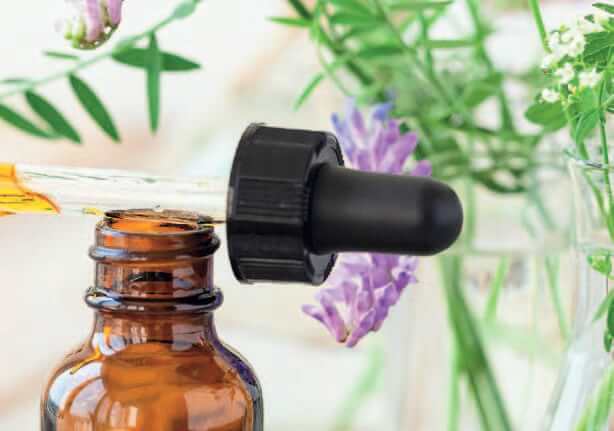
Introduction
Nowadays consumer awareness is increasing and due to social media and digital marketing everybody is aware about the Silicone free, Paraben free, Harsh chemical free products, so popularity of natural cosmetics are increasing gradually.
Natural Cosmetics
As far as cosmetic regulatory guideline is concern, there is no clear FDA guideline for natural cosmetics but every country has their own standard for the natural cosmetics. In natural cosmetics includes Ayurvedic Cosmetics, Herbal Cosmetics, Ecocert Cosmetics, Organic Cosmetics, etc …
Basically in consumer point of view, natural cosmetics means it is more safer than others and it has more efficacy than non-natural cosmetics, chemicals are not safe for the human skin like Paraben, petrolatum, silicones, perfumes, etc … and natural cosmetics are bio degradable and recyclable but only it is bio degradable and recyclable, rest of all are not true.
There is no specific guideline for natural cosmetics, every country is using their own guideline like in INDIA – Ayurvedic cosmetic which is regulated by AYUSH department, European countries have specific guideline for Natural and Organic cosmetic which is govern by COSMOS standard.
COSMOS standard is mainly to promote organic farming and non-hazardous manufacturing process.
USDA – US department of Agriculture and Council of Europe’s committee of experts on cosmetic products are monitoring and evolving the meaning of natural and organic cosmetics.
History of Natural Cosmetics
Natural cosmetics were used from ancient times. Many religious rituals had mentioned to use of natural cosmetics in the book. In Ayurvedic books mentioned the henna powder to use for the hair and body decoration in INDIA. Our Ancestors knew the usage of mud for the face and body cleaning and purification. They knew about to take a bath with Milk and turmeric with rose petals for healthy skin, in winter they used to take bath after massaging with oil like coconut and sesame for soft and smooth skin. After taking bath they used to apply oils like Coconut, Sesame, Peanut and Almond on the hair for healthy and shiny hair, even they also know that applying the oils like sunflower and sesame on the hand and leg before going outside will protect from sun. Jasmine, rose, sandal oils are also used as per their religious rituals. They know that basil oil will protect from mosquito bite, they were also using tea tree oil, rosemary oil and lemon oil for the anti-dandruff and as an anti-fungal activity. Oatmeal, wheat meal and bran using as an exfoliants. Egyptians used scented oils to clean body and for soften the skin.
Ayurvedic Cosmetics
Ayurveda term is a combination of two Sanskrit word “AYUR” means life or longevity and “VEDA” means knowledge or science, so Ayurveda means the knowledge or science of life. Ayurvedic concept is more famous in INDIA. Many companies in INDIA are selling the Ayurvedic cosmetic products, All Ayurvedic cosmetic products are not 100% natural, In some Ayurvedic formulation contains synthetic base using emulsifier, emollient, preservatives along with the active ingredients which are used to in Ayurvedic cosmetic products are available from approved reference books by AYUSH (Ayurveda, Yoga and Naturopathy, Unani, Siddha and Homeopathy) regulatory department and it has the proven time tested study and it is also available in ancient Ayurvedic textbooks like Bhav Prakash Nighantu, Charak Samhita, Ayurvedic pharmacopeia of INDIA. Ayurveda is an INDIAN traditional system which is based on three elements (THRIDOSHA) which is called VATA, PITHA AND DKAPHA.
In current market scenario some companies developed Ayurvedic products and branding their product with big image of Ayurvedic ingredients and in the label mentioning key ingredients and some companies are using the word like 100 % Ayurvedic actives so consumer think that the product is 100 % natural, but it is not true, base formulation of some Ayurvedic cosmetics are synthetic along with Ayurvedic actives.
Herbal Cosmetics
The herbal word is originated from mediaeval Latin liber herbalis (“book of herbs”). Herbal cosmetic means the cosmetic product which contains the herbs into their products with the various cosmetic permissible ingredients in the base formulation and the herbs which provides defined cosmetic benefit called Herbal Cosmetics. Generally, herbs are made from plant extracts, roots, leaves, flowers, seeds, stems, barks, fruits and used as per their properties in extract and oil forms in Herbal cosmetics. Indian traditional knowledge about the use of plant described in many Ayurvedic Books which has great help to identify the phytochemicals for Skin and Body care herbal cosmetics preparation, if someone is making the product with herbal ingredient, they have to provide the safety and efficacy data for that particular herbs. Some herbal is also a part of Ayurveda. This is the difference between Ayurvedic and Herbal Cosmetic. The same rule apply here also like all herbal cosmetics are not 100 % natural. Herbal cosmetic
is a modern trend currently.
Herbal cosmetics are made up from the blend of base formulation which may contains a synthetic or natural emulsifiers, emollients, thickener and contains one or more herbs. Herbs contains phytochemical constituent which serve as cosmetics for care of the body and its parts and its also influence biological function of skin and provide nutrient for skin and hair. Like it contains vitamins, minerals, antioxidants, carbohydrate, proteins and bioactive molecules. Herbal cosmetics are not covered under FDA (food and drug administration) like cosmetics, they are subjected to their efficacy and safety, and it is not mandatory to claim its bioactive ingredients efficacy that how it penetrate to the skin. There is no concept of Herbal & Ayurvedic concept in outside of INDIA, other countries considering as a cosmetic product or as a drug.
Natural and Organic Cosmetics
COSMOS-standard stands for COSMetics Organic Standard and it has been developed by five European and international organizations, BDIH-Germany, COSMEBIO-France, ECOCERT Green life SAS-France, ICEA-Italy and SOIL ASSOCIATION-UK members who had designed the definition and common requirement for natural and organic cosmetics and they are responsible for setting
natural and organic cosmetic standard which are an international non-profit association registered in Belgium.
Basically, these guidelines are based on promoting the use of biodiversity and organic agriculture, using natural resources responsibility, and respecting the environment, and using processing and manufacturing that are clean and respectful of environment and human health, developing the concept of “Green chemistry” and its integrating.
As per these standards all the ingredients which are used into the formulation must be certified, process to make that ingredients are also certified, facility of the ingredients as well as formulation must be certified and formulation of the product also must be certified from the COSMOS agencies so that traceability of ingredient, process and formulation are controlled.
In this standard, sets a five categories of ingredients contain in cosmetic formulation as mentioned here, Water-Basic ingredient in the formulation and it must comply with hygienic standard like CFU less than 100/ml, Water obtained from osmosis, potable, spring, distilled and sea are acceptable, Mineral ingredients – accepted if the process and ingredients are listed in standard, Physical processed agro ingredients – Raw ingredients obtained from plant with physical process listed in standard are accepted, Chemical processed agro ingredients – certifiable by using agriculture organic raw materials and manufacturing processes that are clean and authorized, all under the umbrella of “Green chemistry” and they have been processed as per the listed in standard and it may contain mineral moieties, Other ingredients – this is the category to actively manage the transition from the current situation to the objectives and direction of this standard, in this certain ingredients are allowed because there is no effective natural alternates are available to ensure the safety and efficacy of the products.
Term “Organic” can be used by the company if the formulation has minimum 95 % organic ingredients, If formulation has less than 95% organic ingredients, company can use COSMOS organic logo on back label but company cannot able to brand the product as “Organic” on front label. Water cannot be calculated as organic added directly or indirectly, Mineral ingredient and mineral origin ingredient are not calculated as organic, physically processed argo- ingredient using only organic primary raw materials and organic solvent is calculated as 100% organic which must be mentioned on the raw material certificate which supplier needs to take from COSMOS and for chemically processed argo-ingredient is required to calculate as per the raw material COSMOS certificate for the final product formulation. Composition of the formulation are categories in two levels like cosmetic product under organic certification and cosmetic product under natural certification.
Minimum 20% of the total ingredients of formulation must be organic. For rinse off products, 10% of the total ingredients of the formulation must be organic and minimum 80% ingredients must be minerals or mineral origin. There is no requirement to use minimum level of organic ingredients.
Some preservatives are accepted in Ecocert like Benzoic acid and its salts, Benzyl Alcohol, Dehydroacetic acid and its salts, Salicylic acid and its salts, Sorbic acid and its salts.
Certification of COSMOS AND NATURAL cosmetics defined criteria are source origin and processing of all the ingredients, composition of all ingredients, storage of ingredients, manufacturing of ingredients, packaging of ingredients, labeling and communication, inspection, certification and control. The users of this all the standards are farmer, manufacturer and brand owner of organic and natural cosmetic products and ingredients, COSMOSstandard, COSMOS Technical Guide which contains additional interpretation and explanation, COSMOS Labelling Guide, COSMOS Control Manual – Certification and Accreditation Requirements.
All the standards are available on COSMOS website and This Standard is the property of the COSMOS-standard AISBL and shall not be copied, reproduced or otherwise used except with its express written permission.
After knowing all the natural cosmetic categories, it is also true that some non-natural cosmetics are better than natural cosmetics in terms of efficacy and safety and vies a versa. And it is also true that natural product has less impact on our environment. Each and every ingredient and product have their own positive and negative so based on the requirement of market needs to create a new products.



